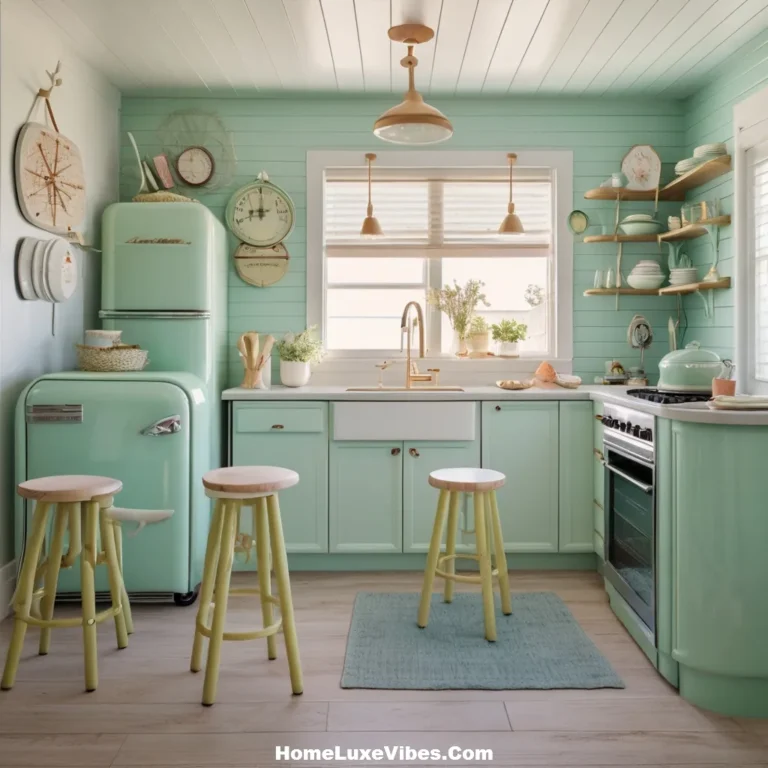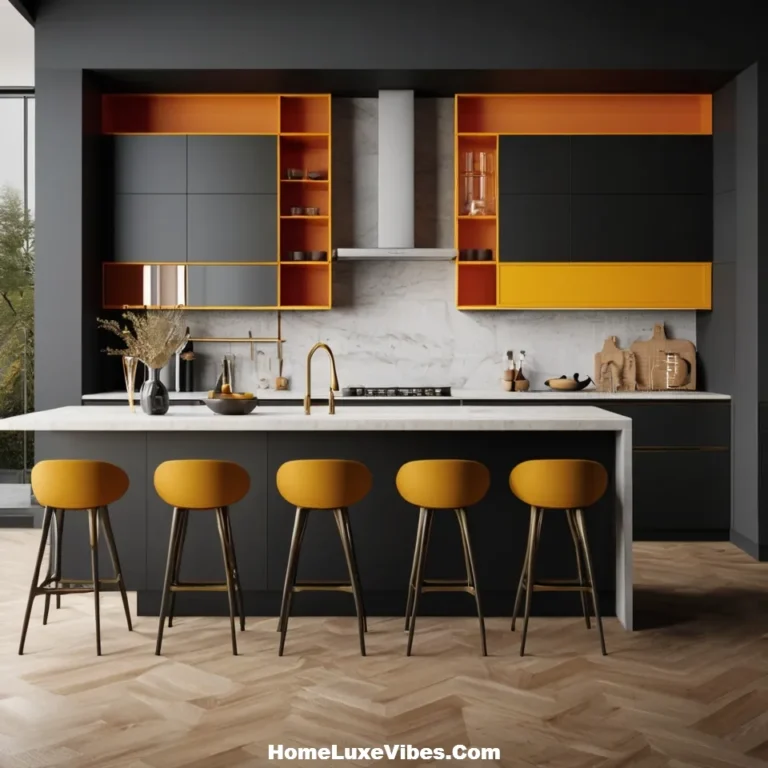13+ Small Kitchen Ideas to Maximize Space and Functionality
Small kitchens can feel limiting, but with the right ideas, they can become practical and inviting spaces. Many people want to improve their small kitchen without making it feel cramped or cluttered.
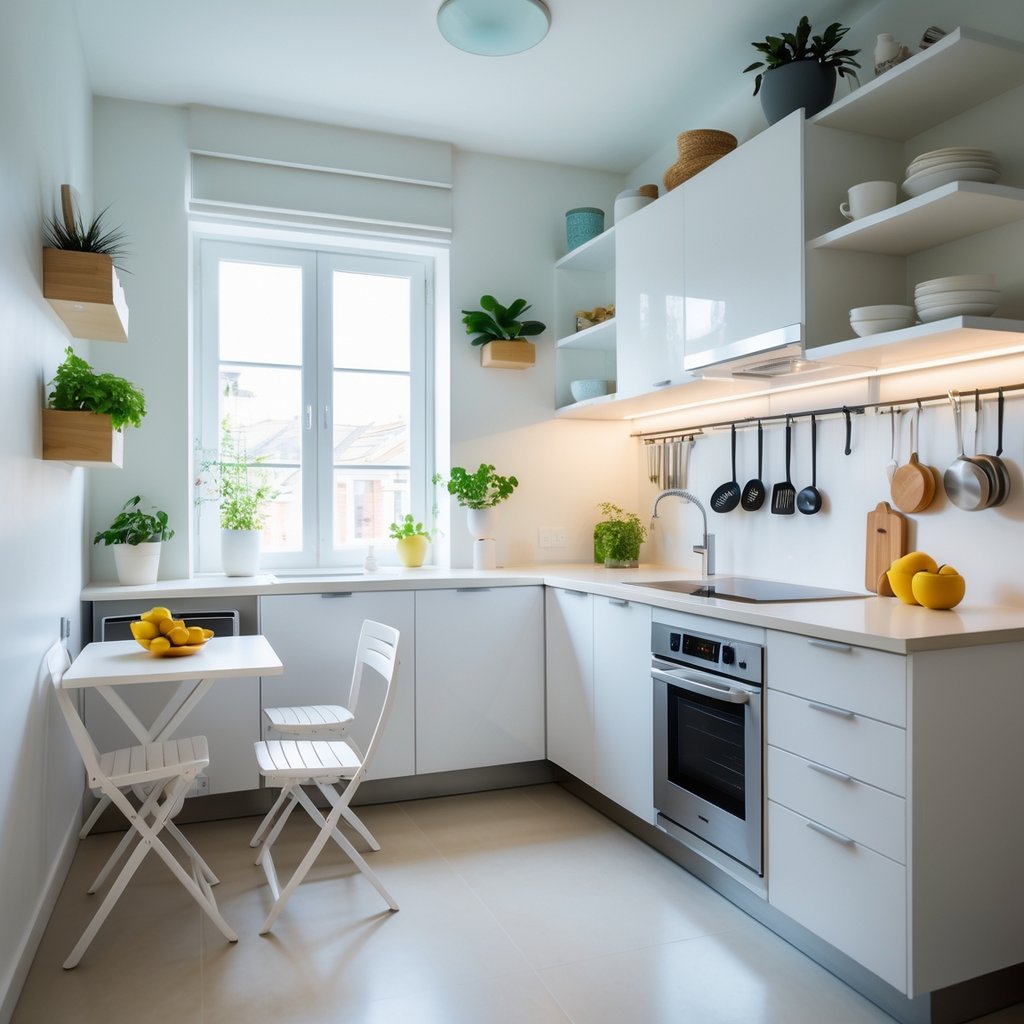
The key to a great small kitchen is making the most of every inch while keeping the space organized and stylish. This article shares more than a dozen ideas to help create a comfortable, efficient kitchen no matter the size.
1. Install Floating Shelves To Maximize Vertical Storage:
Floating shelves use wall space to add storage without taking up floor area. They keep items visible and easy to reach, which helps reduce clutter on counters.
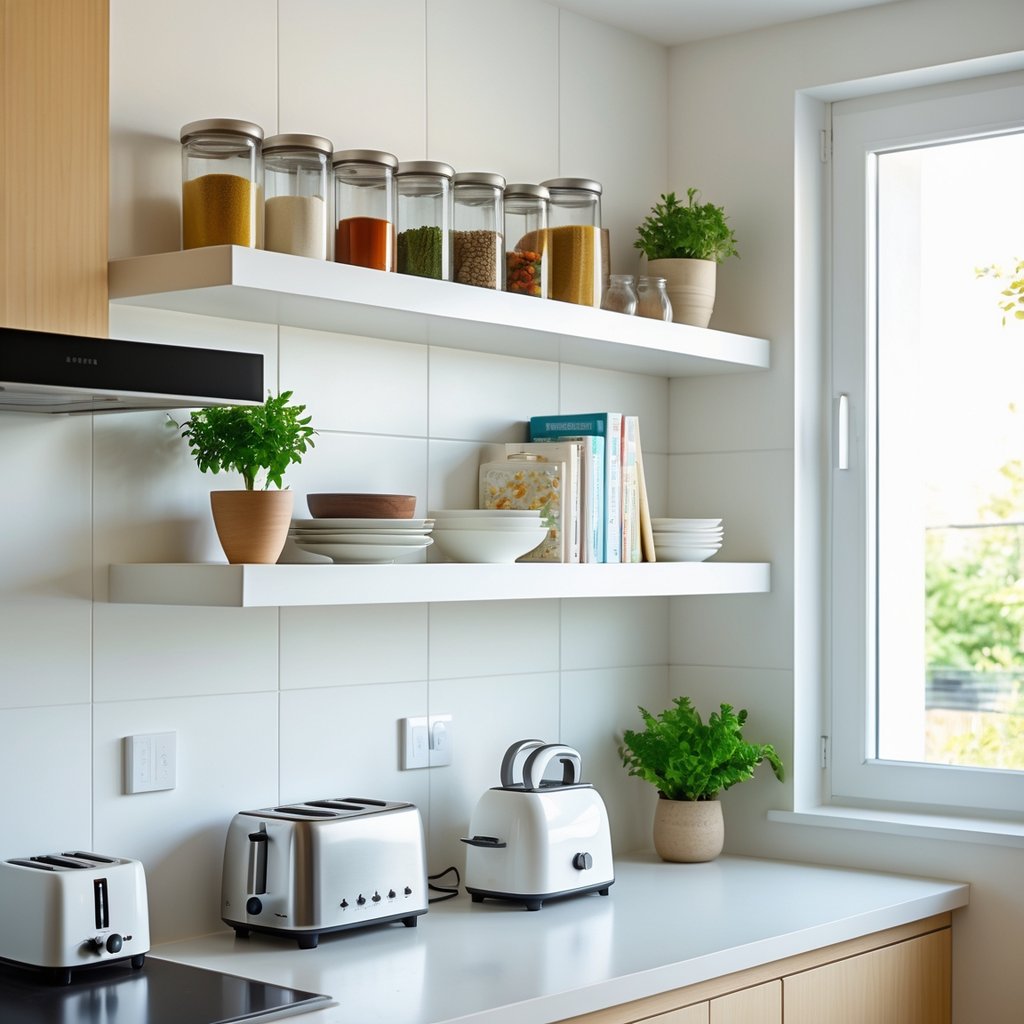
In small kitchens, stacking 2-3 shelves vertically can hold dishes, spices, or cookware. Choosing shelves around 24-36 inches wide balances storage capacity without overwhelming the room.
Floating shelves also create an open, airy feel, making a kitchen look larger and brighter. They work well in both modern and traditional designs.
2. Use Light Colors To Make The Space Feel Larger:
Light colors help reflect natural and artificial light, making a small kitchen appear more open. Shades like white, pale gray, and soft pastels reduce visual clutter and create an airy feel.
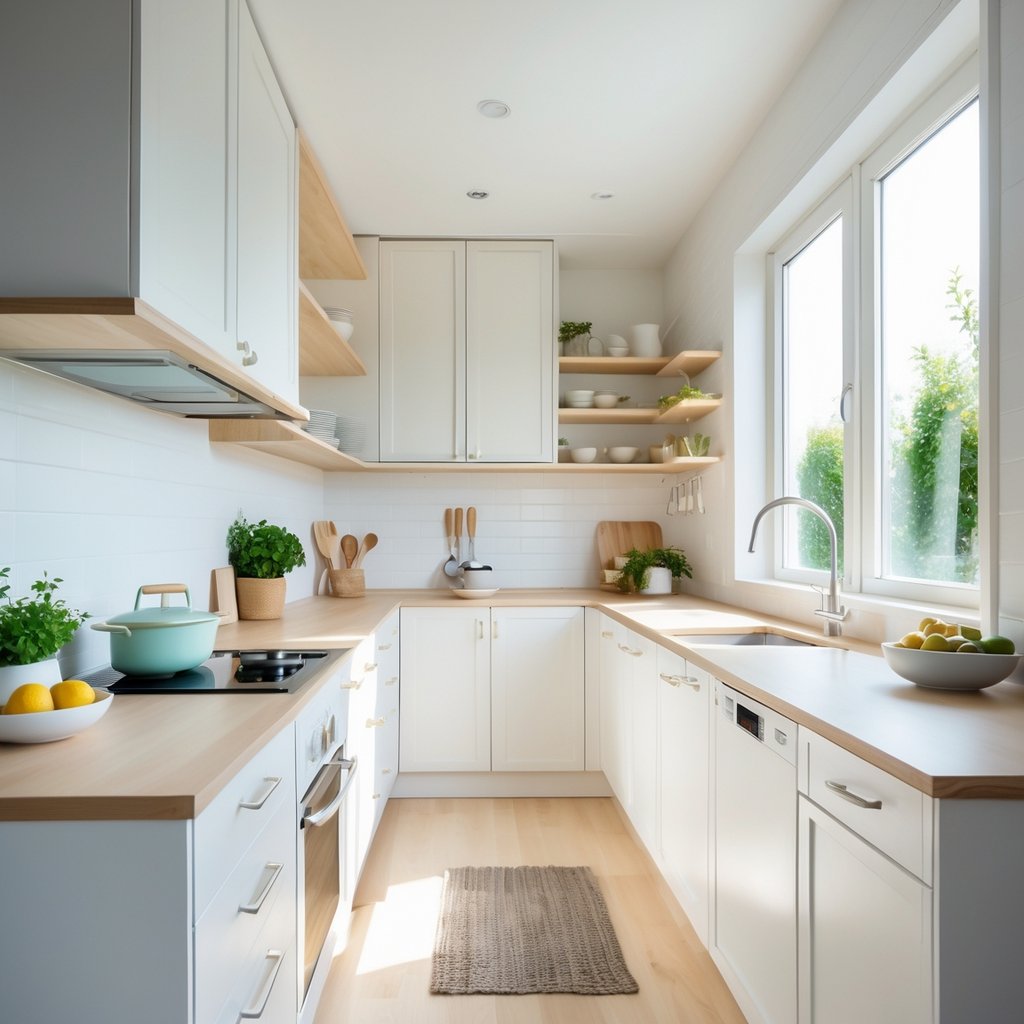
Using a monochromatic palette with similar light tones for walls, cabinets, and countertops can unify the space. This approach prevents harsh contrasts that break up the room, making it feel bigger.
3. Incorporate Under-Cabinet Lighting For Better Visibility:
Under-cabinet lighting brightens countertops, making food prep easier and safer. It helps reduce shadows that overhead lights can miss in small kitchens.
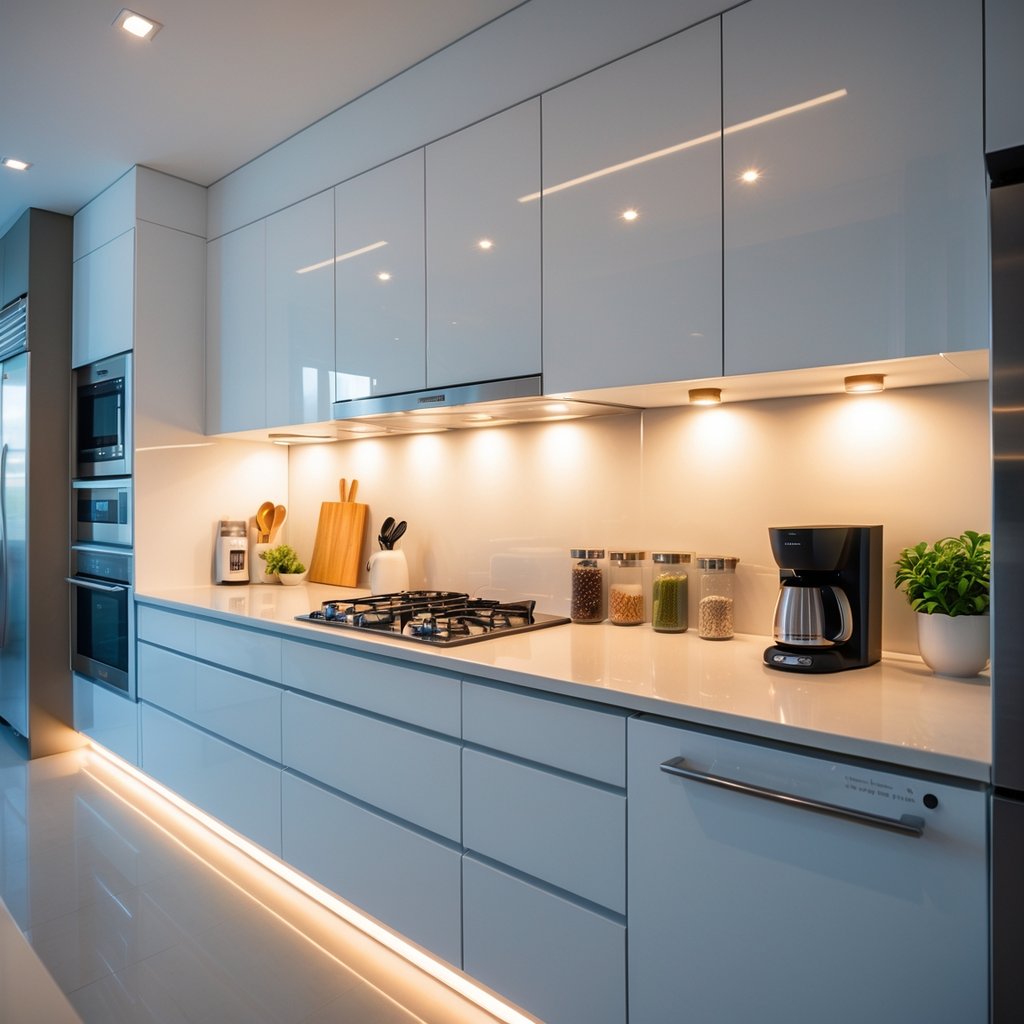
LED light bars and strips are popular choices because they provide even light, use little energy, and are simple to install.
This lighting also adds a clean, modern look while improving functionality in tight spaces.
4. Opt For A Compact, Slide-In Dishwasher:
A compact, slide-in dishwasher fits neatly under the counter, saving valuable floor space. It offers the same cleaning power as larger models but with a smaller footprint.
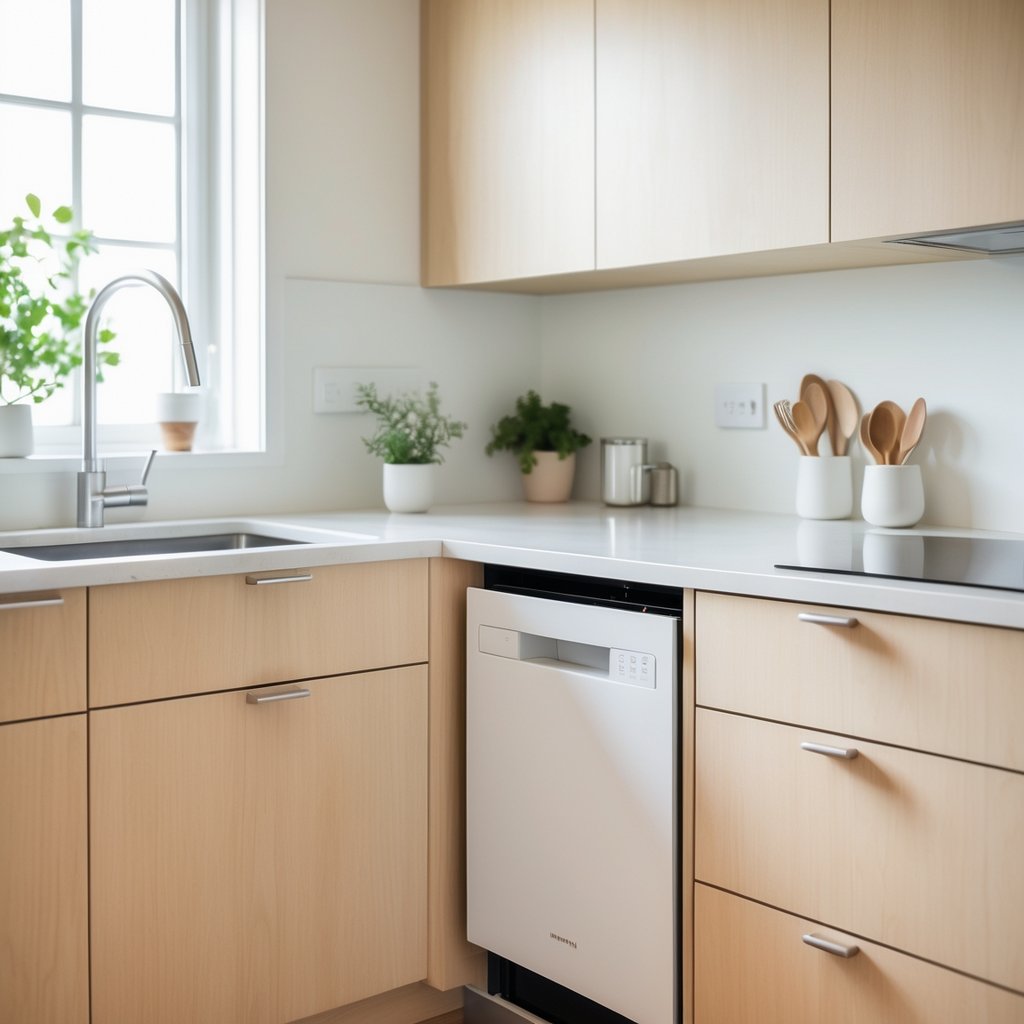
These dishwashers blend well with cabinetry for a clean, built-in look. They also make loading and unloading easier because they sit at a convenient height.
Choosing a slide-in model helps keep the kitchen tidy and functional without crowding the space.
5. Choose Slim-Profile Appliances Designed For Small Spaces:
Slim-profile appliances save valuable space without reducing performance. They fit into narrow spots, freeing up room for movement and storage.
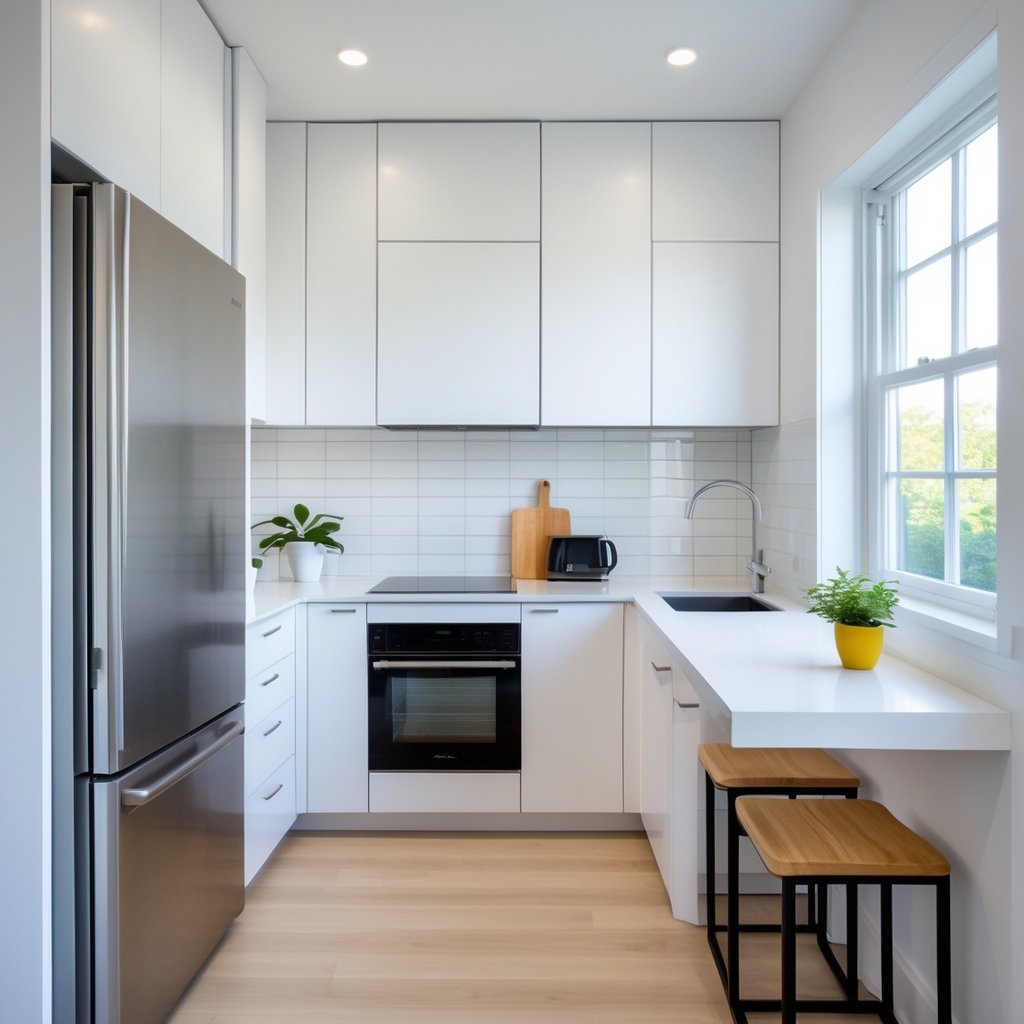
These appliances often include slim refrigerators, dishwashers, and ovens made specifically for tight kitchens. They offer the same functions as standard models but take up less space.
Using slim-profile appliances helps keep a small kitchen organized and efficient. It allows for a cleaner layout without overcrowding the area.
6. Add A Skylight Or Additional Windows For Natural Light:
Adding a skylight can bring natural light into a small kitchen, making it feel brighter and more open. It helps reduce the need for artificial lighting during the day.
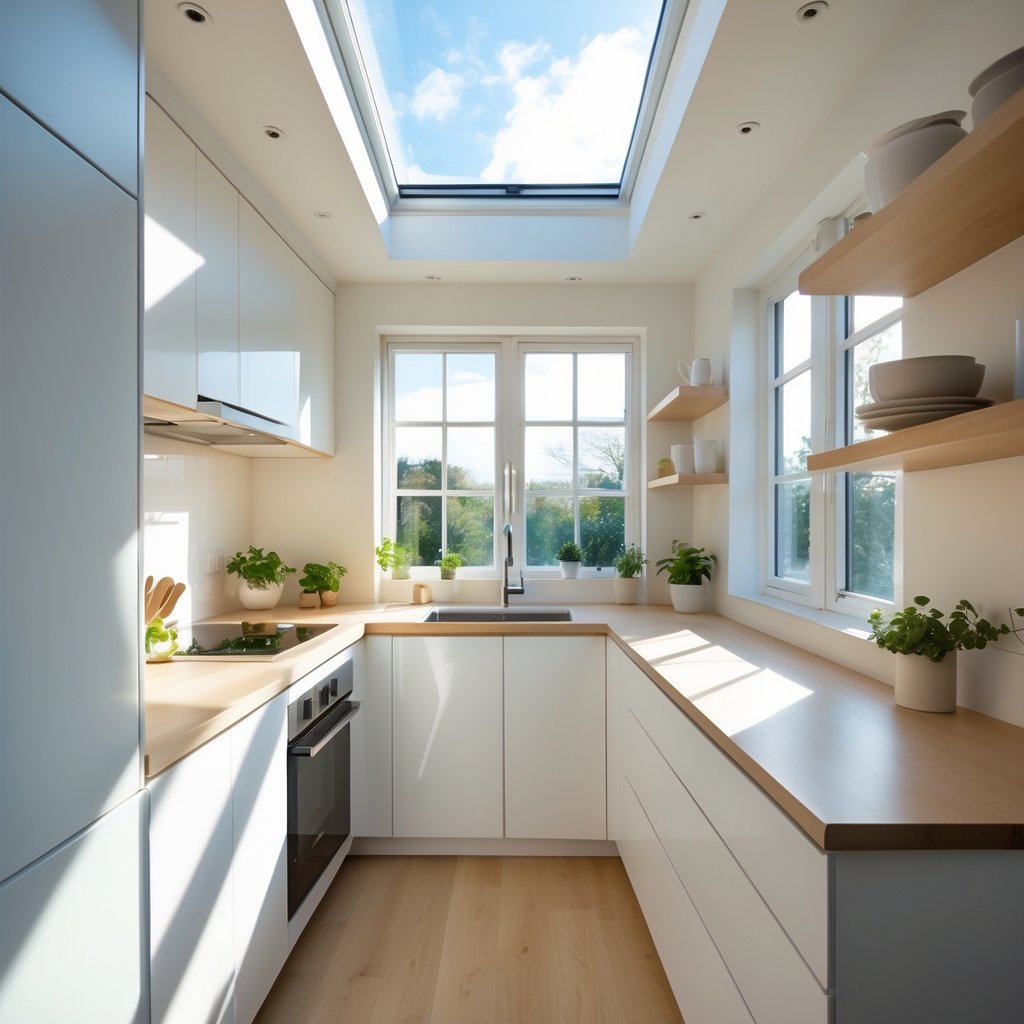
Extra windows also improve air flow and add a view outside. They can make the kitchen appear larger and more inviting.
Both options increase natural light, which improves mood and makes the space easier to work in. Skylights and windows can be chosen to fit different kitchen styles.
7. Use Magnetic Knife Strips Instead Of Bulky Blocks:
Magnetic knife strips save counter space by holding knives on the wall. They keep blades visible and easy to reach. Unlike knife blocks, they do not take up much room or collect dust. This makes them a cleaner, more efficient option.
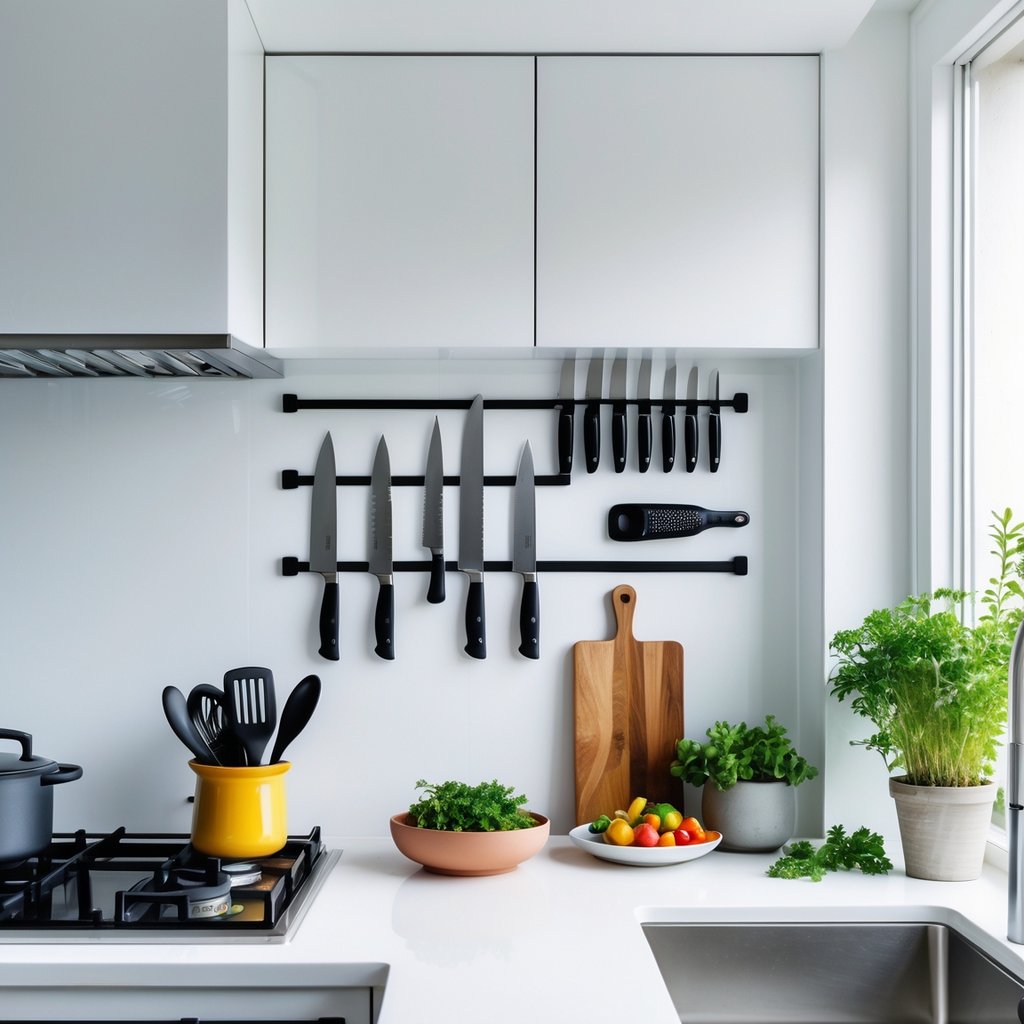
They also work well in very small kitchens where every inch counts. Magnetic strips help organize and free up space for cooking tasks.
8. Install Pull-Out Pantry Shelves For Easy Access:
Pull-out pantry shelves help make the most of small kitchen spaces. They slide out, allowing easy reach to items stored at the back. This reduces the need to bend or stretch.
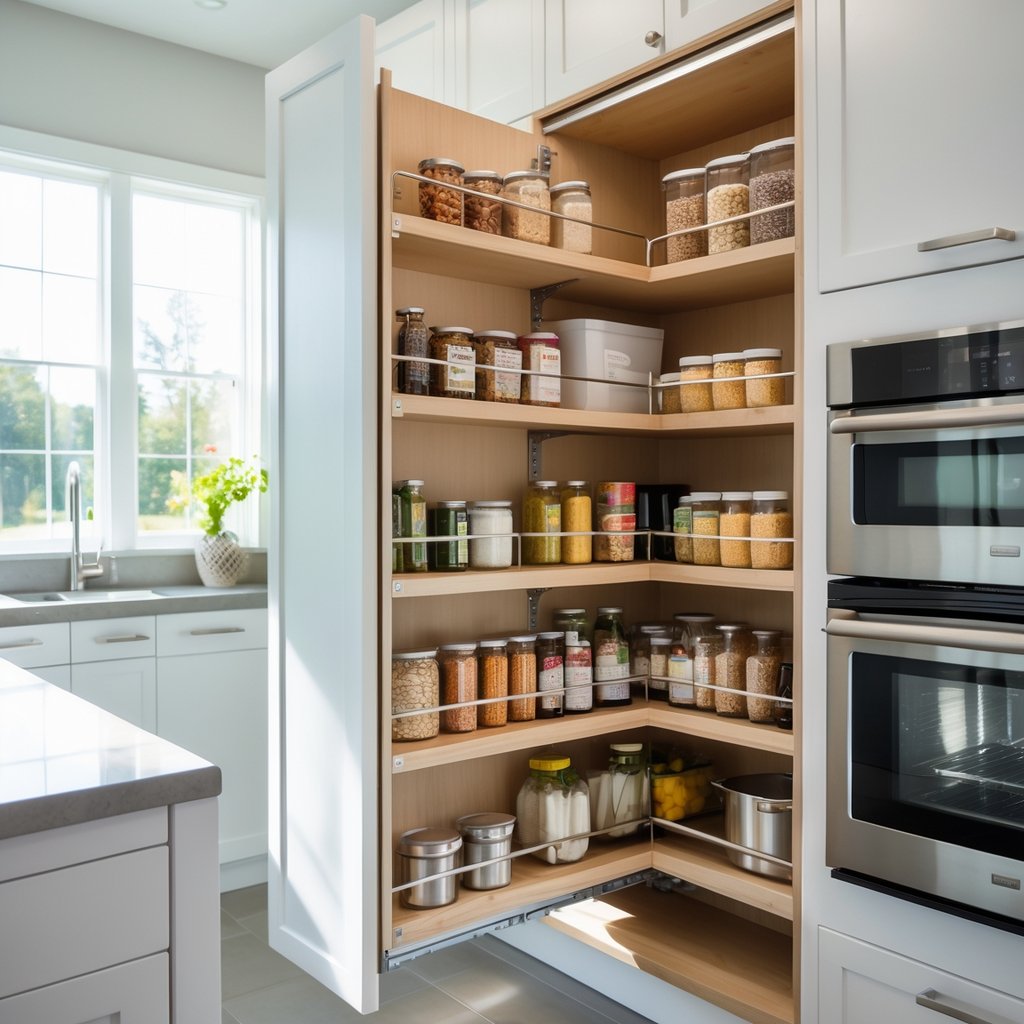
These shelves can be DIY or bought as kits. Installing them improves organization and saves time when cooking. They fit inside existing cabinets or pantry spaces.
By using pull-out shelves, kitchens become more functional without adding more furniture. This is a practical solution for small kitchens needing better storage.
9. Utilize Corner Cabinets With Lazy Susans:
Lazy Susans are rotating shelves that fit inside corner cabinets. They make it easier to reach items stored in deep, awkward spaces.
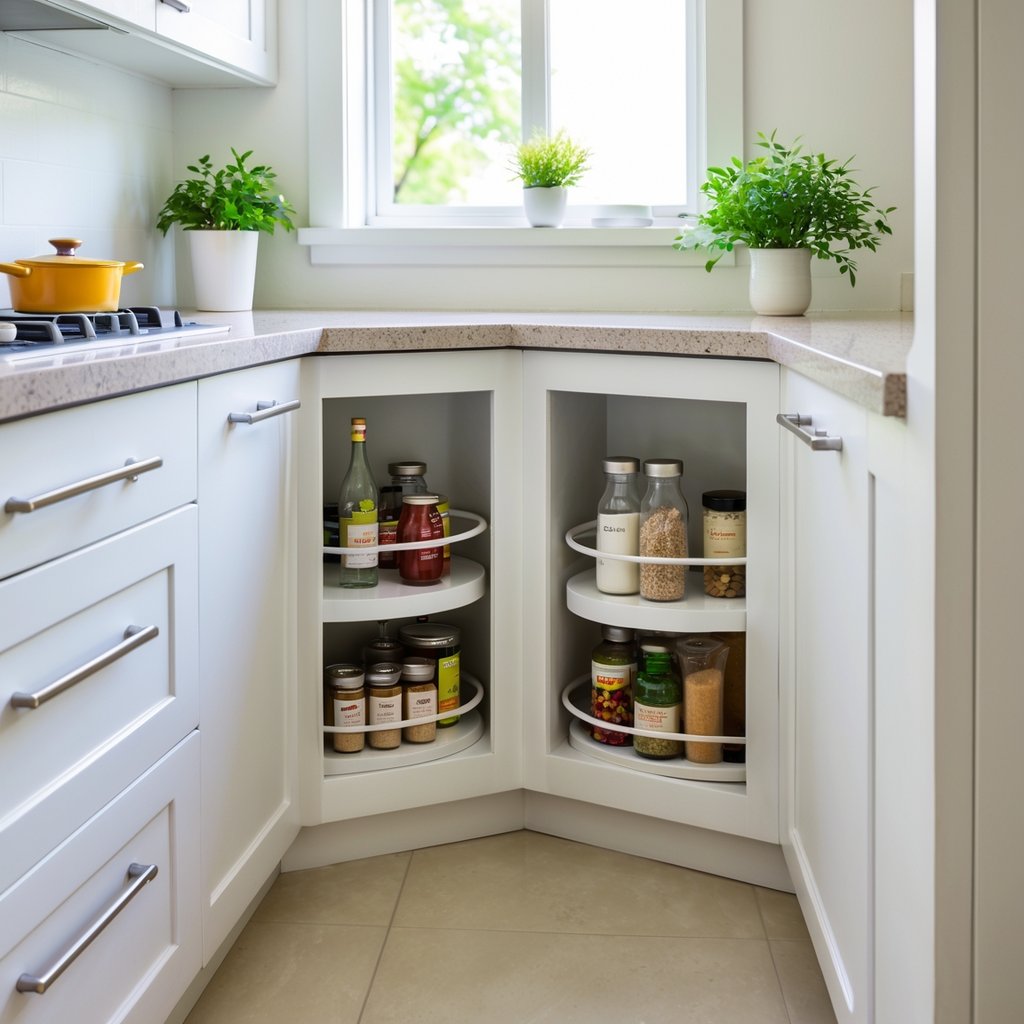
This design can come as full or half-moon shapes to fit different cabinet sizes. It helps keep kitchenware organized and accessible without wasting space.
Using a lazy Susan can improve storage for pots, spices, and small appliances. It is a practical choice for small kitchens needing efficient corner solutions.
10. Incorporate A Fold-Down Or Pull-Out Countertop Extension:
A fold-down or pull-out countertop extension adds extra workspace without using permanent space. It can be folded or slid away when not needed, keeping the kitchen neat and open.
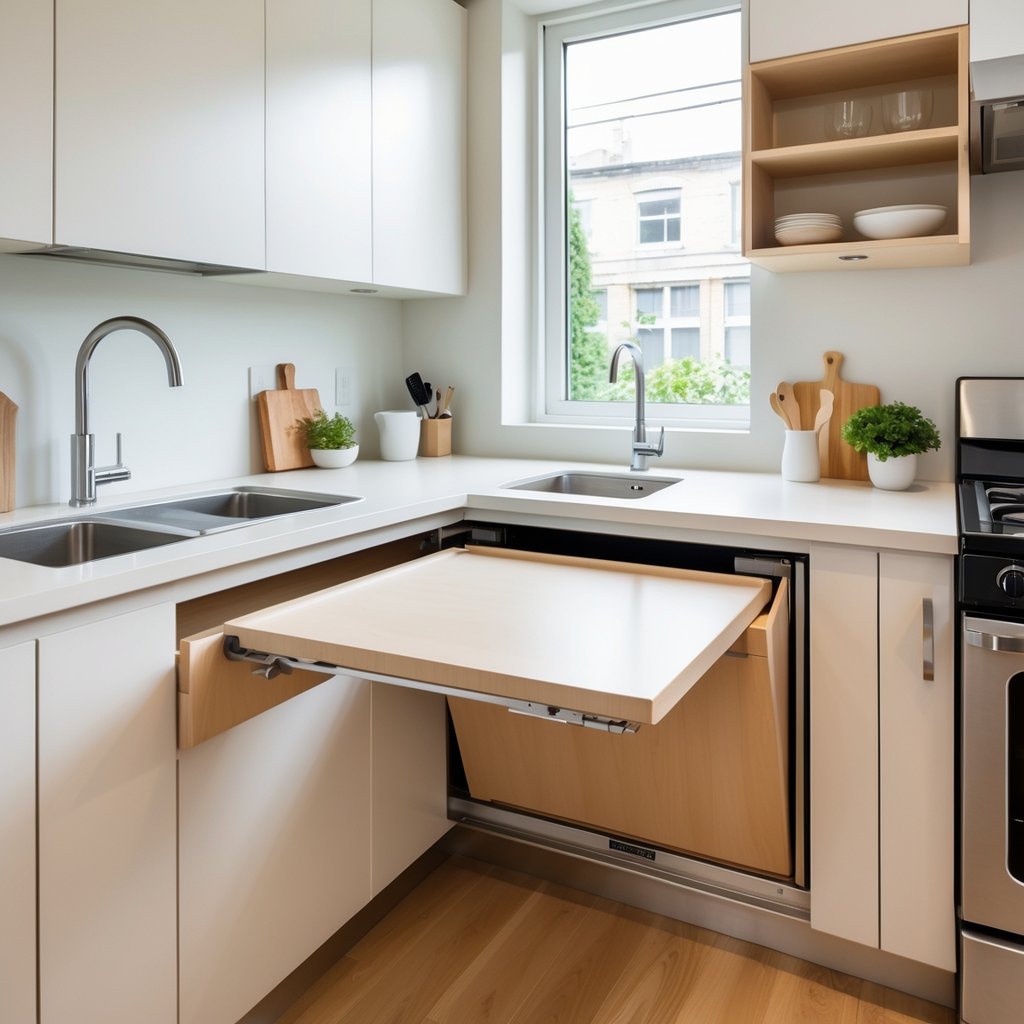
This solution works well in small kitchens where every inch counts. It gives users more prep area during cooking and can also serve as a small dining or work spot.
11. Choose Open Shelving For Frequently Used Items:
Open shelving keeps everyday kitchen items easy to reach. It helps reduce the time spent searching through cabinets. Items like plates, glasses, and mugs are perfect for open shelves.
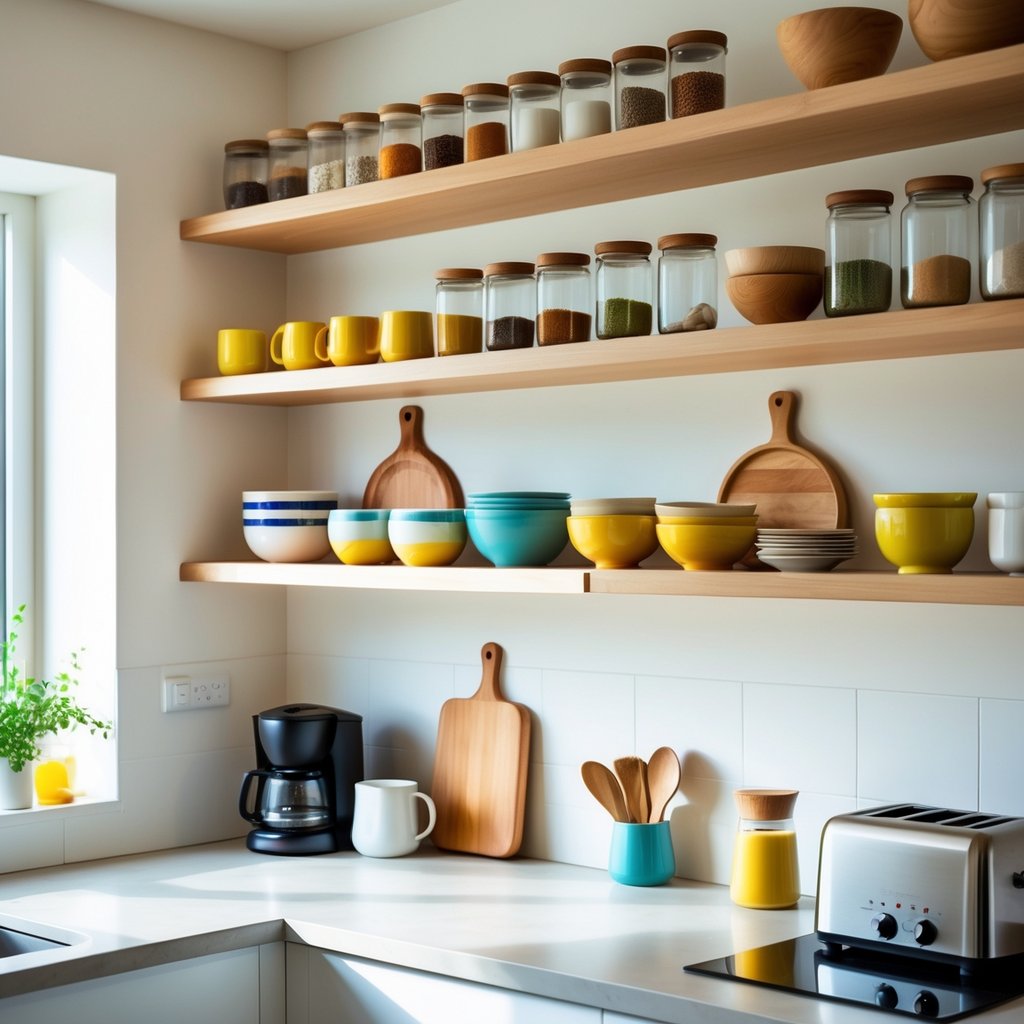
This type of storage also makes the kitchen feel more spacious. It adds an airy and modern look. Shelves can be arranged to fit the kitchen’s style, whether simple or decorative.
Open shelving works well when combined with closed cabinets. This balance hides less used or unattractive items while keeping essentials visible and accessible.
12. Use Clear Glass Cabinet Doors To Create Depth:
Clear glass cabinet doors help open up a small kitchen. They allow light to pass through, making the space feel larger and less closed off.
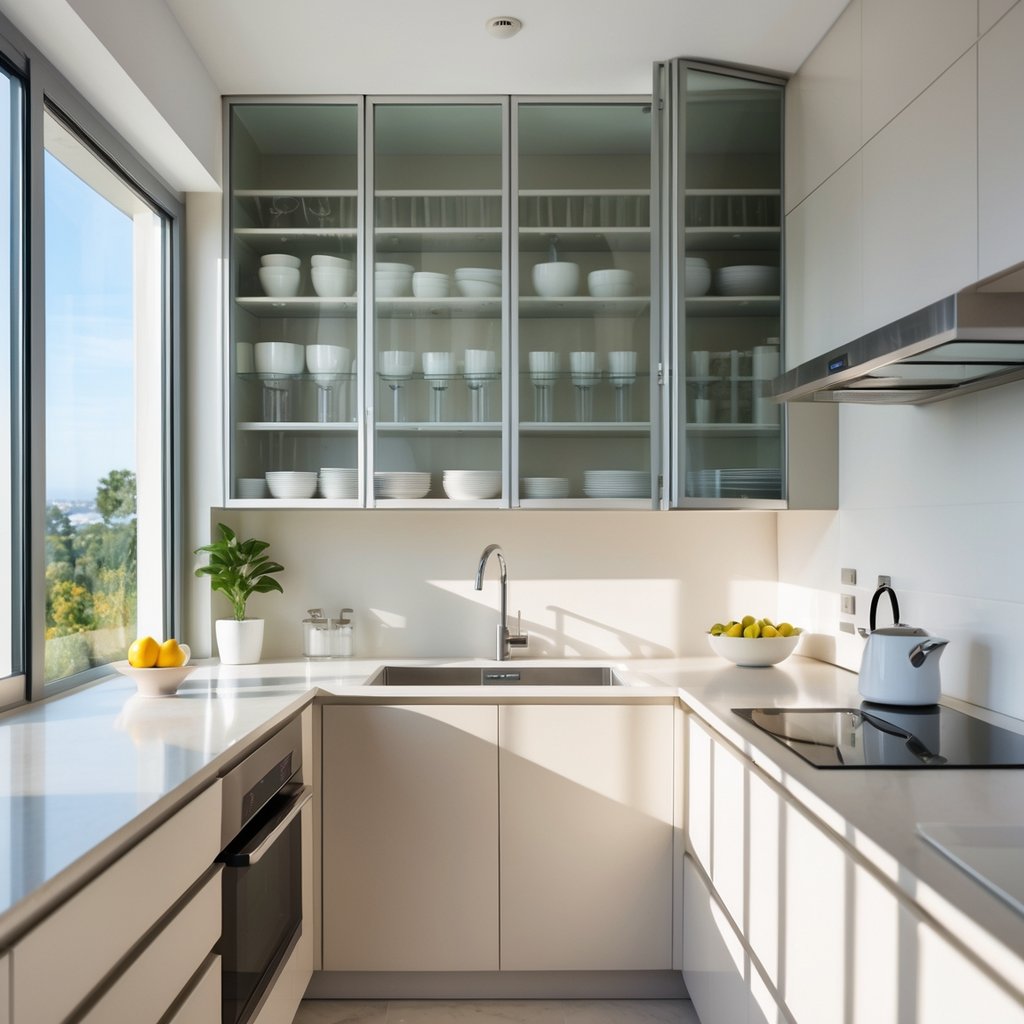
People can see inside the cabinets, which adds a sense of depth and makes the kitchen look more spacious.
This design choice also helps with locating items quickly. It combines practicality with a simple way to enhance the kitchen’s overall look.
13. Install Hooks For Hanging Pots And Utensils:
Hooks offer a simple way to save cabinet and drawer space. They can be installed under shelves, cabinets, or on walls to hang pots, pans, and cooking tools.
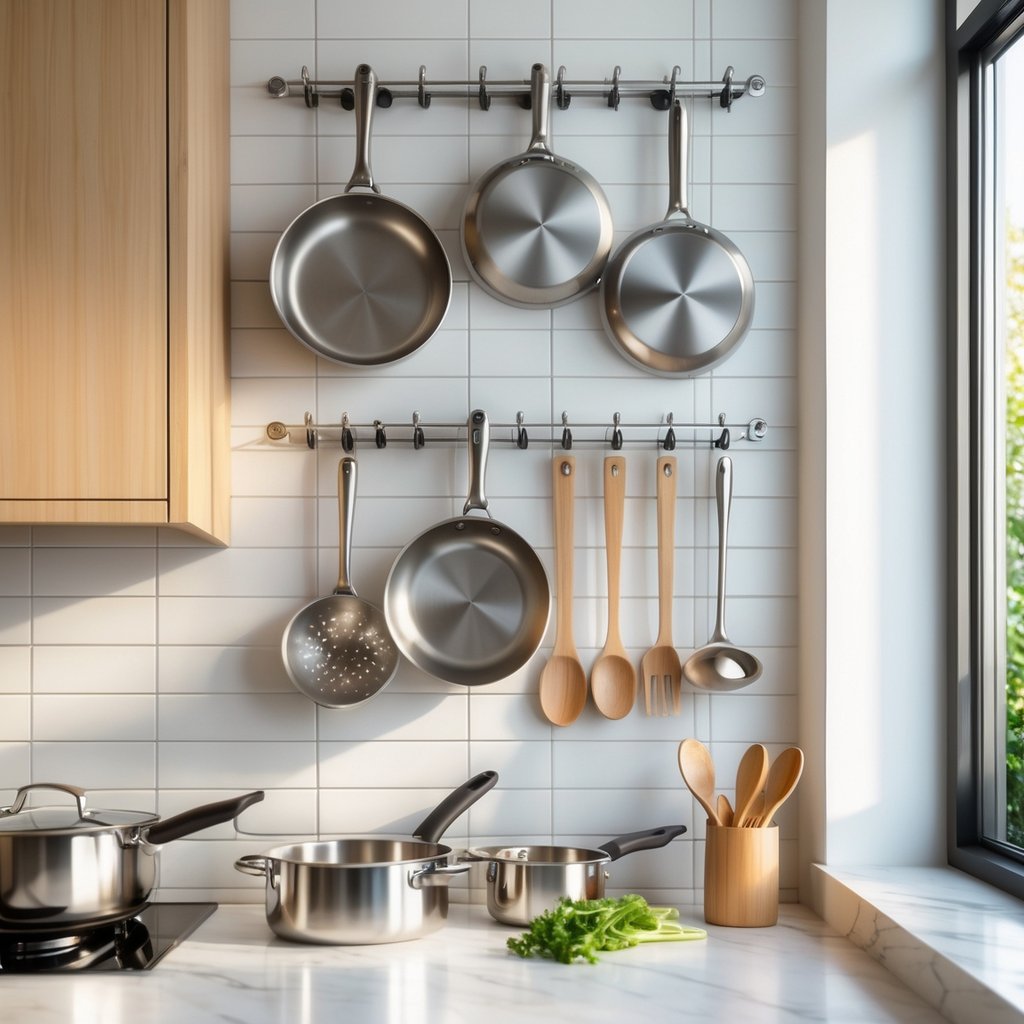
This keeps items within easy reach and helps organize the kitchen. Small hooks can hold utensils, while larger ones support heavier cookware.
Using hooks also frees up counter space, making the kitchen feel less cluttered. They work well in kitchens of any size.
Maximizing Functionality In Small Kitchens:
Small kitchens need smart choices to work well. Efficient use of every inch helps keep the space tidy and practical. Solutions focus on smart storage and good lighting to improve usability.
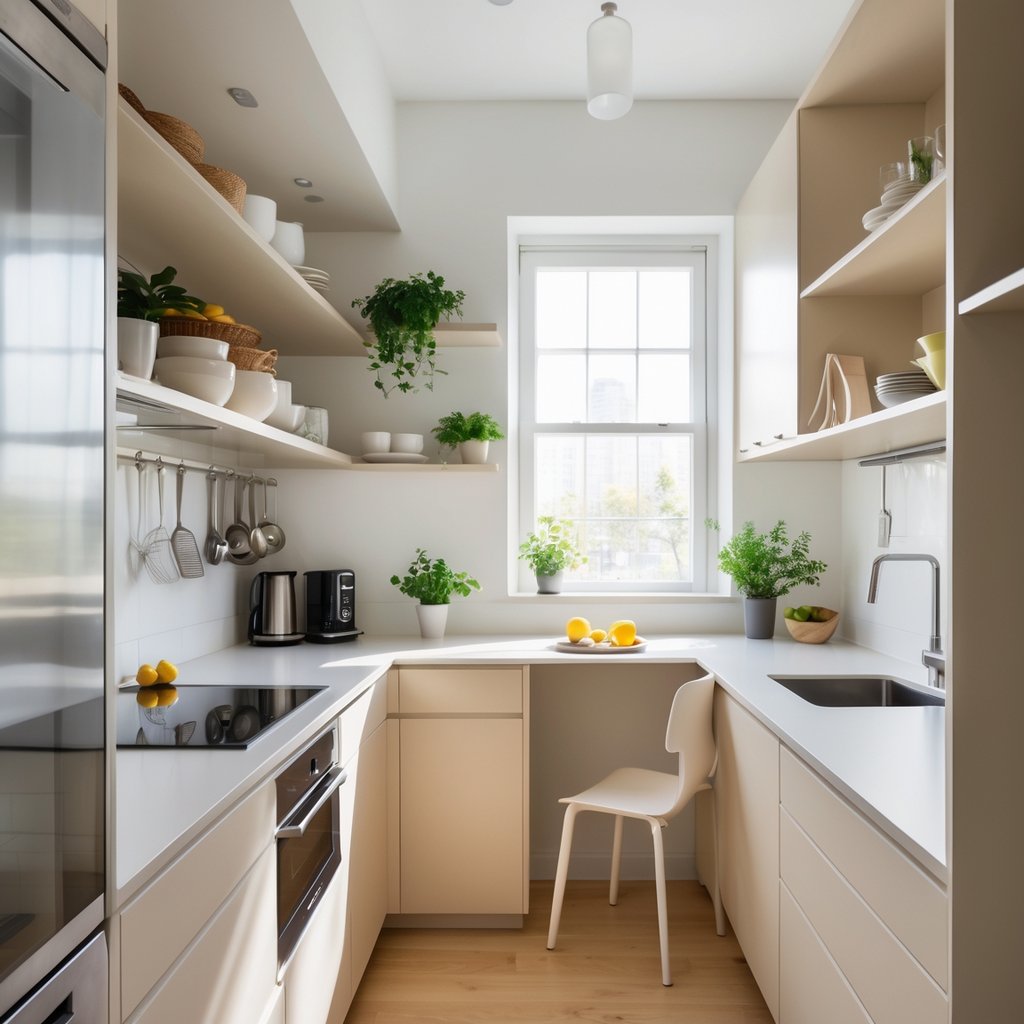
Vertical Storage Solutions:
Using vertical space is key in small kitchens. Installing tall cabinets or open shelves up to the ceiling creates more room to store dishes, cookware, and pantry items. Hooks or magnetic strips on walls hold utensils and knives without taking counter space.
Stackable storage containers and racks inside cabinets also help keep things organized. Pull-out shelves make it easier to reach items stored in the back. Using the inside of cabinet doors for small racks or spice holders adds even more storage options.
This approach keeps counters clear and maximizes every inch by going upwards, making the kitchen feel less crowded.
Lighting Strategies For Small Spaces:
Good lighting makes a small kitchen feel larger and more inviting. Layering lights with overhead fixtures and under-cabinet lights reduces shadows and brightens work areas. LED strips under shelves or cabinets provide focused light for countertops.
Natural light should be used whenever possible. Avoid heavy window coverings and choose light colors for walls to reflect light well.
Task lighting is important around key spots like the stove, sink, and prep areas. Using adjustable lights or dimmers gives control over brightness and mood.
A well-lit kitchen improves visibility and creates an open, welcoming atmosphere even in limited space.
Design Principles For A Spacious Feel:
Creating a sense of space in a small kitchen relies on smart color choices and efficient layouts. These elements work together to open up the room visually and improve the flow, making the kitchen both pleasant and practical.
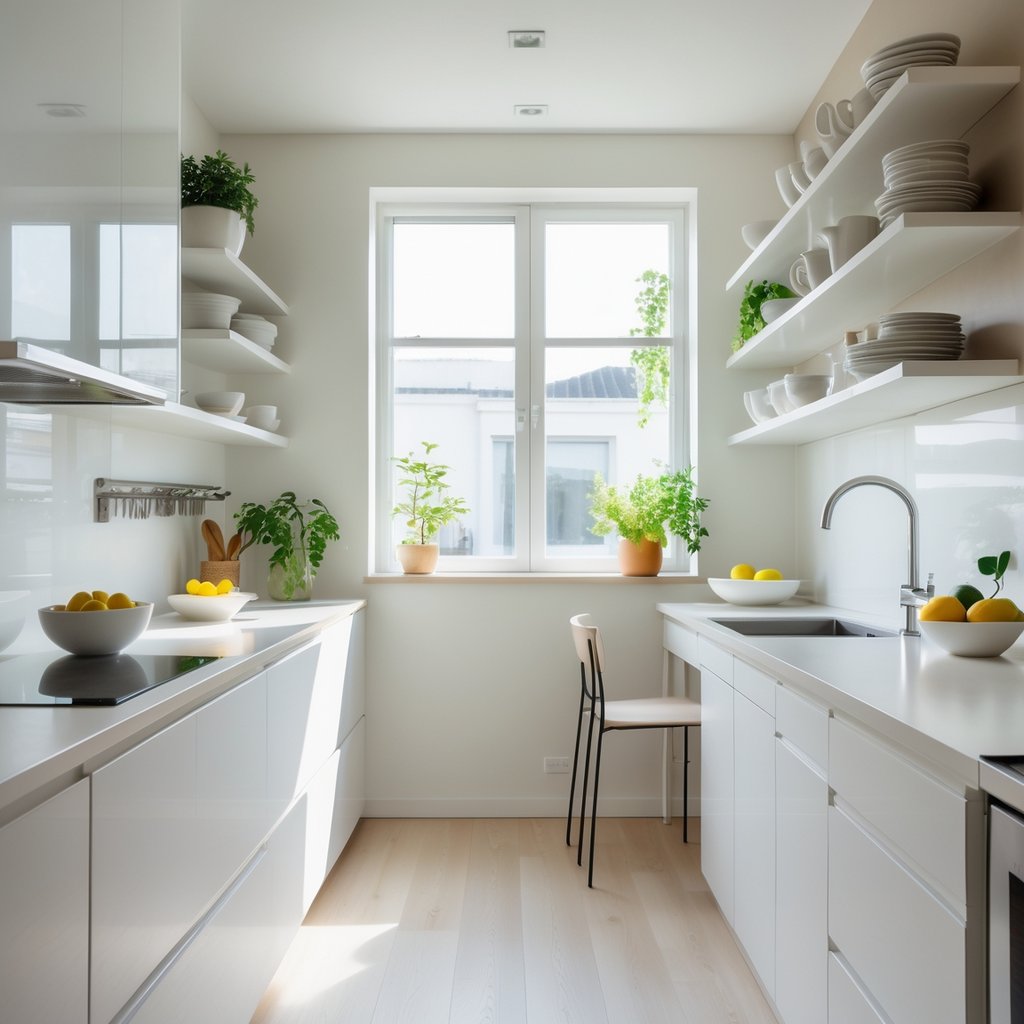
Color Schemes That Enhance Openness:
Light colors help make small kitchens appear larger and brighter. Whites, light grays, and soft pastels reflect more light, which reduces shadows and opens up the space visually. Using the same color for walls, cabinets, and counters can create a seamless look that avoids visual breaks, making the kitchen feel more expansive.
Incorporating accents with natural wood or soft metallics adds warmth without crowding the space. Glossy or satin finishes on cabinets can also reflect light, enhancing the airy feel. Avoid dark colors that absorb light and make the kitchen feel smaller or more cramped.
Streamlined Layouts For Efficiency:
A well-planned layout is key to making a small kitchen functional and roomy. L-shaped and galley layouts work well because they allow for easy movement between cooking zones like the sink, stove, and fridge without wasted space.
Open shelving or cabinets with clean lines reduce visual clutter. Keeping countertops clear and using vertical storage options helps preserve workspace. Compact appliances suited to the kitchen size also free up room and make the kitchen feel less crowded. Attention to flow and storage placement supports faster, smoother kitchen tasks.

